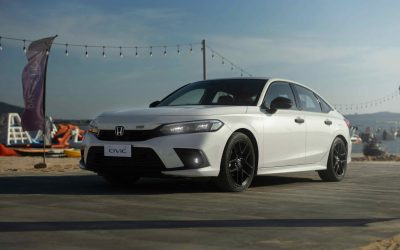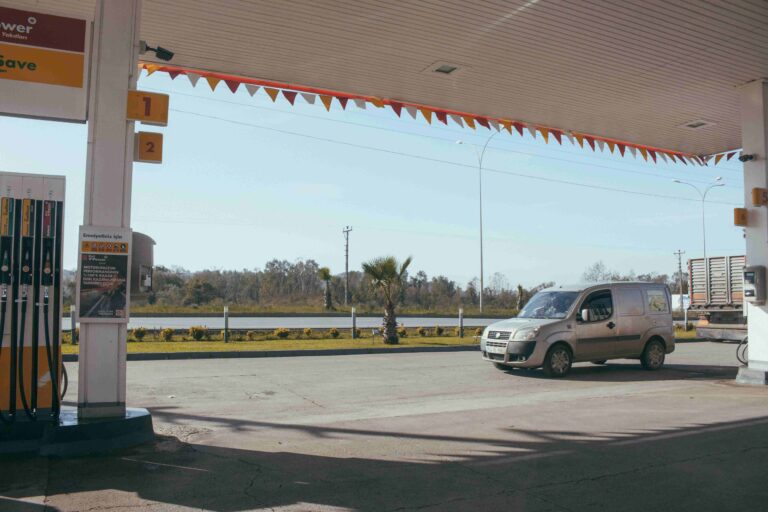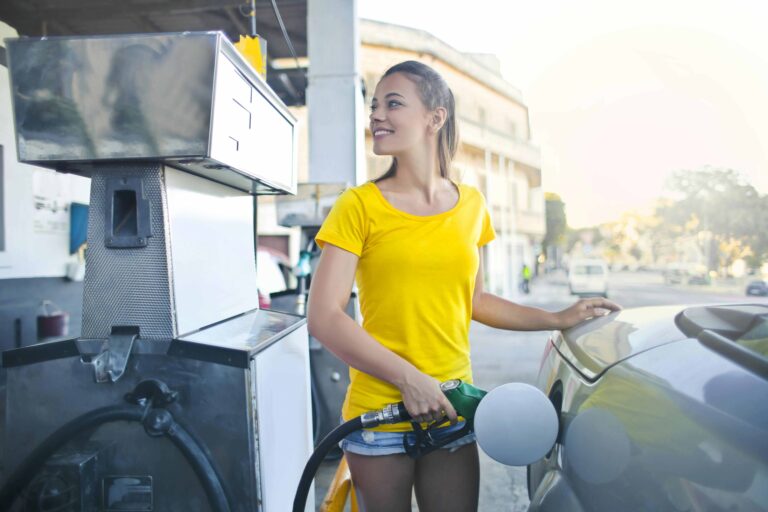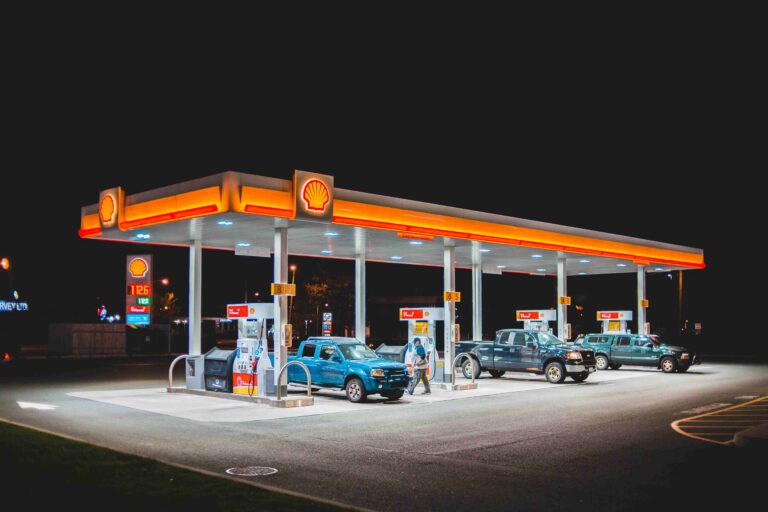How Much Gas Does a Car Use Per Miles
How much gas a car uses per mile is an important aspect to know and plays a significant role in determining its operating costs and environmental impact. Understanding fuel economy is essential for budgeting expenses and making informed decisions about vehicle choices. Factors such as engine size, vehicle weight, driving habits, and maintenance can influence fuel consumption.
By examining the relationship between vehicle fuel economy, efficiency, and distance traveled, drivers can optimize their fuel economy and reduce their carbon footprint, contributing to both personal financial savings and environmental sustainability.

How Many Miles is a Gallon of Gas

The number of miles a car can travel on a gallon of gas, commonly referred to as miles per gallon (MPG), varies depending on several factors, such as the vehicle’s make and model, engine size, driving conditions, and driver behavior. On average fuel economy, passenger vehicles in the United States achieve around 25 miles per gallon, though this figure can range from as low as 15 MPG for larger, less fuel-efficient vehicles to over 50 MPG for hybrid or electric vehicles.
Smaller, more fuel-efficient cars with smaller engines tend to have higher MPG ratings, allowing them to travel farther on a gallon of gas compared to larger, less aerodynamic vehicles with larger engines. Additionally, driving habits such as aggressive acceleration and excessive idling can negatively impact fuel efficiency, leading to fewer miles per gallon.
Factors such as highway driving versus city driving, road conditions, and vehicle maintenance also influence a vehicle’s fuel economy and efficiency. So car manufacturers pay special attention to maintaining proper tire pressure, regular engine tune-ups, and using the recommended grade of motor oil, which can help optimize fuel economy.
Ultimately, the fuel economy ratings and number of miles a car can travel on a gallon of gas are crucial considerations for drivers looking to minimize fuel costs and reduce their environmental footprint. Understanding and maximizing fuel efficiency can lead to significant savings over time while promoting sustainable driving practices.
Call Now For Pre-Qualification Info
How Many Miles Can You Drive on One Gallon of Gasoline?
The number of miles you can drive on one gallon of gasoline, known as miles per gallon (MPG), varies widely to determine a vehicle’s fuel economy depending on several factors, including the make and model of the vehicle, engine type and size, driving conditions, and individual driving habits.
On average, passenger vehicles in the United States achieve around 25.4 miles per miles per gallon (MPG). However, this figure can vary significantly based on the following factors:

Vehicle Make and Model
Different vehicles have different fuel efficiencies. Compact cars and hybrids tend to have higher MPG ratings compared to larger SUVs and trucks.
Engine Size and Type
Smaller engines typically offer better fuel efficiency, allowing for more miles per gallon of gasoline. Additionally, vehicles with turbocharged or diesel engines may have different MPG ratings compared to traditional gasoline engines.
Driving Conditions
Fuel efficiency can vary based on driving conditions such as city driving, highway driving, and stop-and-go traffic. City driving typically results in lower MPG compared to highway driving due to frequent stops and starts.
Driving Habits
Aggressive driving behaviors such as rapid acceleration, excessive speeding, and frequent braking can reduce fuel efficiency, resulting in fewer miles per gallon.
Vehicle Maintenance
Proper maintenance, including regular tune-ups, tire rotations, and keeping tires properly inflated, can improve fuel efficiency and increase the number of miles you can drive on one gallon of gasoline.
To calculate the specific number of miles you can drive on one gallon of gasoline for your vehicle, you can use the following formula:
Miles Per Gallon (MPG) = Total Miles Driven Total Gallons of Gasoline Used Miles Per Gallon (MPG) = Total Gallons of Gasoline Used Total Miles Driven
Call Now For Pre-Qualification Info
How Much Gas Does a Car Use Per km

In countries that use the metric system, such as many European and Asian countries, fuel efficiency is typically measured in liters per 100 kilometers (L/100km). This metric indicates the amount of fuel (in liters) a car consumes to travel a distance of 100 kilometers.
The fuel consumption of a car per kilometer depends on several factors, including the vehicle’s make and model, engine size, driving conditions, and individual driving habits. Generally, smaller and more fuel-efficient cars with smaller engines tend to have lower fuel consumption per kilometer compared to larger, less fuel-efficient vehicles with larger engines.
For example, a small compact car might have a fuel consumption of around 5 to 7 liters per 100 kilometers, while larger SUVs or trucks might have fuel consumption rates ranging from 10 to 15 liters per 100 kilometers or more.
Fuel consumption per kilometer can also be affected by driving conditions such as city driving versus highway driving, traffic congestion, and driving habits such as aggressive acceleration or excessive idling.
To calculate the specific fuel consumption per kilometer for your vehicle, you can use the following formula:
Fuel Consumption (L/100 km) = Total Liters of Gasoline Used Total Kilometers Driven Fuel Consumption (L/100km) = Total Kilometers Driven Total Liters of Gasoline Used
Call Now For Pre-Qualification Info
How Much Gas Does a Car Use Per Hour
The fuel consumption of a car per hour is not typically a standard measurement used in the automotive industry. Instead, fuel consumption is commonly measured in miles per gallon (MPG) or liters per 100 kilometers (L/100km), which represent the distance traveled per unit of fuel consumed. However, it is possible to estimate fuel consumption per hour based on various factors like gas prices, AC systems, per unit volume, etc.

Idling
When a car is idling, it consumes fuel without covering any distance. Idling fuel consumption can vary depending on the engine size and type, but on average, cars can consume about 0.1 to 0.6 gallons (or 0.4 to 2.3 liters) of fuel per hour while idling. Larger vehicles with larger engines tend to have higher idling fuel consumption rates.
Engine Size and Type
The fuel consumption rate of a car’s engine and gas tank varies based on its size and type. Larger engines typically consume more fuel per hour than smaller ones. Similarly, diesel engines may have different fuel consumption rates compared to gasoline engines.
Driving Conditions
Fuel consumption per hour can fluctuate depending on driving conditions, such as city driving versus highway driving, traffic congestion, and driving habits. Stop-and-go traffic and frequent acceleration and braking can increase fuel consumption per hour compared to steady highway driving.
Vehicle Accessories
The use of vehicle accessories such as air conditioning, heating, and entertainment systems can impact fuel consumption per hour. Running these accessories while the engine is idling or while driving can increase fuel consumption.
Call Now For Pre-Qualification Info
How Much Gas Does a Car Use Per Mile Per Liter

When measuring fuel consumption in terms of miles per liter (MPL), we’re essentially calculating how many miles a car can travel on one liter of gasoline. This metric is the reciprocal of the more commonly used measure, liters per 100 kilometers (L/100km), where lower values indicate better fuel efficiency.
To convert miles per gallon (MPG) to miles per liter (MPL), we use the following conversion factor: 1 gallon (3.78541 liters), 1 gallon (3.78541 liters)
Let’s say a car has a fuel efficiency rating of 30 miles per gallon (MPG). To convert this to miles per liter (MPL), we divide the number of miles by the number of liters: MPL=30 miles3.78541 liters (7.92 miles per liter) MPL=3.78541 liters30 miles≈7.92 miles per liter
This means that the car can travel approximately 7.92 miles on one liter of gasoline.
Conversely, if we know the fuel efficiency in terms of miles per liter (MPL), we can convert it to miles per gallon (MPG) by dividing 1 by the MPL value: MPG=1MPLMPG=MPL1
For example, if a car has a fuel efficiency rating of 10 miles per liter (MPL), then its fuel efficiency in miles per gallon (MPG) would be MPG = 110 = 0.1 gallons per mile.
It’s important to note that higher values of miles per liter (MPL) indicate better fuel cost and efficiency, meaning the car can travel more miles on one liter of gasoline.
The explanation provides a clear understanding of how fuel efficiency is measured in terms of miles per liter (MPL), how many gallons, and how it relates to the more commonly used measure, liters per 100 kilometers (L/100km). It’s helpful to see the conversion process from miles per gallon (MPG) to miles per liter (MPL) and vice versa, along with the explanation of the reciprocal relationship between the two metrics. This information is valuable for individuals comparing fuel efficiency ratings across different measurement systems or evaluating the performance of their vehicles in terms of fuel consumption. Overall, your explanation effectively breaks down the concept of fuel efficiency in miles per liter and provides a useful conversion method for interpreting fuel consumption data.
Call Now For Pre-Qualification Info
How to Calculate Gas Mileage
Calculating gas mileage, or how many gallons, also known as fuel efficiency, involves determining how many miles a vehicle can travel per unit of fuel consumed and fuel cost. Several factors affect gas mileage, and understanding these aspects is crucial for accurate calculations.

Distance Traveled
To calculate gas mileage, start by recording the distance traveled by the vehicle. This can be done by using the odometer, which measures the total distance traveled since the vehicle’s last reset.
Amount of Fuel Consumed
Measure the amount of fuel consumed during the period of travel. This can be done by filling up the gas tank and recording the amount of fuel added (in gallons or liters). Alternatively, if you know the fuel tank capacity and the remaining fuel level after the trip, you can calculate the amount of fuel consumed.
Units of Measurement
Ensure consistency in units of measurement. Gas mileage is commonly expressed in miles per gallon (MPG) in the United States, while liters per 100 kilometers (L/100km) is more common in countries that use the metric system. Convert units as necessary to ensure accurate calculations.
Driving Conditions
Gas mileage can vary based on driving conditions such as city driving, speed limits, highway driving, and traffic congestion. Keep track of driving patterns to calculate gas mileage accurately.
Vehicle Factors
Gas mileage is influenced by various vehicle factors, including engine size, vehicle weight, aerodynamics, tire pressure, and maintenance. Well-maintained vehicles with properly inflated tires tend to have better gas mileage.
Driving Habits
Driving habits such as speeding, aggressive acceleration, and excessive idling can negatively impact gas mileage. Efficient driving practices such as maintaining a steady speed, gradual acceleration, and minimizing idling time can improve gas mileage.
To calculate gas mileage, use the following formula:
Gas Mileage=Distance Traveled Amount of Fuel Consumed
Gas Mileage=Amount of Fuel Consumed/Distance Traveled
By considering these aspects and using the appropriate formula, you can accurately calculate gas mileage for your vehicle. Regular monitoring of gas mileage can help you identify trends, optimize fuel efficiency, and make informed decisions to reduce fuel consumption and expenses.
Call Now For Pre-Qualification Info
How to Get More Out of a Gallon of a Gas
Getting more out of a gallon of gas, also known as improving fuel efficiency, is essential for reducing fuel costs and minimizing environmental impact. It can vary depending on short or long trips and the total distance to be covered. There are several strategies and practices drivers can implement to maximize the distance traveled per gallon of gasoline:

Regular Maintenance
Proper vehicle maintenance is crucial for optimal fuel efficiency. Regularly scheduled maintenance, including tune-ups, oil changes, air filter replacements, and tire rotations, ensures that the engine operates efficiently and reduces fuel consumption.
Proper Tire Maintenance
Keeping tires properly inflated according to the manufacturer’s recommendations can improve fuel efficiency by reducing rolling resistance. Underinflated tires increase fuel consumption, so check tire pressure regularly and inflate them to the recommended levels.
Efficient Driving Habits
Smooth Acceleration and Deceleration
Avoid rapid acceleration and heavy braking, as they waste fuel. Gradually accelerate and anticipate traffic flow to maintain a steady speed.
Maintain a Consistent Speed
Driving at a consistent speed on highways can improve fuel efficiency. Use cruise control when appropriate to maintain a constant speed.
Avoid Excessive Idling
Turn off the engine if you anticipate idling for an extended period, as idling consumes fuel unnecessarily.
Reduce Vehicle Weight
Remove unnecessary items from the vehicle to reduce weight and improve fuel efficiency. Extra weight increases fuel consumption, so avoid carrying heavy cargo or equipment unless necessary.
Plan Efficient Routes
Plan your trips to minimize driving distance and avoid congested routes whenever possible. Use navigation apps or GPS devices to find the most fuel-efficient routes and avoid traffic delays.
Use Air Conditioning Wisely
Air conditioning can increase fuel consumption, especially at higher speeds. Use the air conditioning sparingly and consider opening windows for ventilation when driving at lower speeds.
Combine Trips
Combine errands and trips to minimize the number of miles driven and reduce fuel consumption. Efficient trip planning helps maximize fuel efficiency and reduces unnecessary driving.
Choose Fuel-Efficient Vehicles
When purchasing a new vehicle, consider fuel efficiency ratings and choose a vehicle with higher MPG or alternative fuel options such as hybrids or electric vehicles.
Fuel Choices
Use fuel-efficient driving techniques and choose high-quality gasoline without additives that can decrease fuel efficiency. Additionally, consider using fuel-saving additives or fuel economy products after consulting with automotive experts.
Monitor Fuel Efficiency
Keep track of fuel consumption and monitor fuel efficiency regularly by checking the odometer reading. Use onboard vehicle information systems or fuel efficiency apps to track fuel consumption trends and identify opportunities for improvement.
By implementing these strategies and practices, drivers can maximize fuel efficiency and get more out of every gallon of gasoline, leading to cost savings and reduced environmental impact.
Call Now For Pre-Qualification Info
Conclusion
Determining and understanding optimized gas consumption is crucial for reducing fuel costs and minimizing environmental impact. By implementing efficient driving habits, maintaining vehicle health, and making informed choices, drivers can maximize fuel efficiency, save money, and contribute to a greener future. Regular monitoring of gas mileage and staying informed about factors affecting fuel consumption empower drivers to make educated decisions that benefit both their wallets and the planet.






